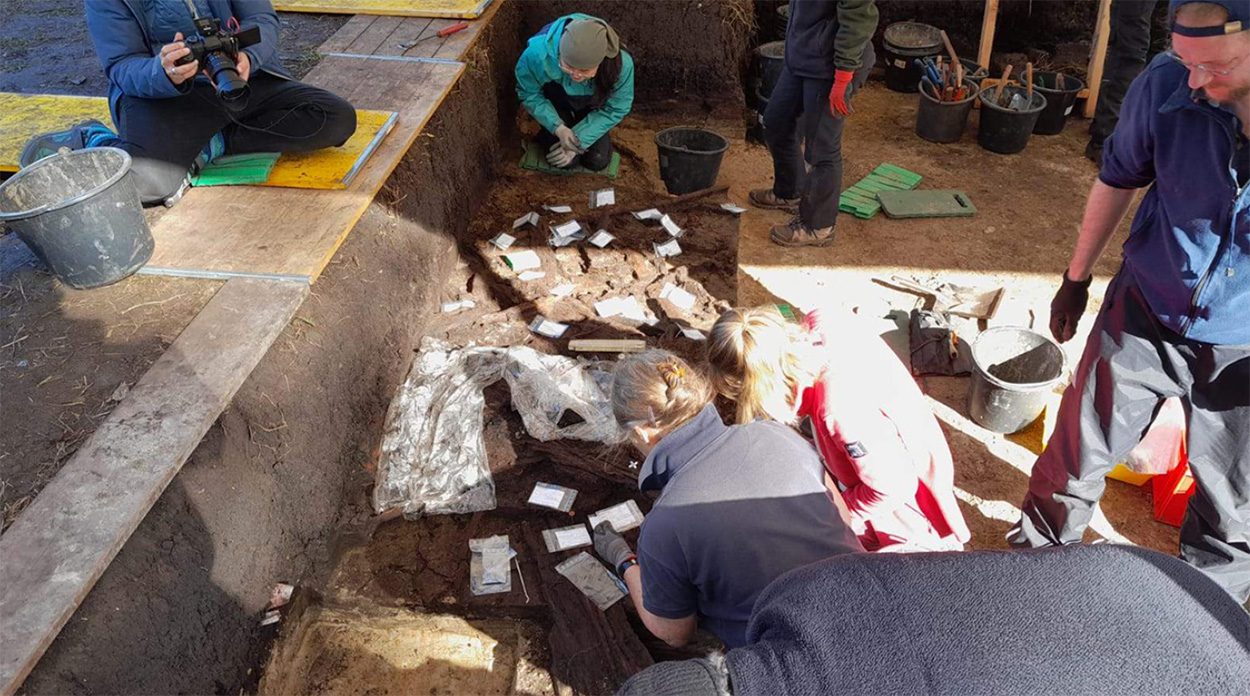Archaeologists have discovered the oldest tomb in northern Germany at Duvenseer Moor in Schleswig-Holstein. It’s a 10,500-year-old relic of a cremation burial made by Mesolithic hunter-gatherers. So far, only one similar ancient grave is known in Northern Europe, a dead man from Gotland who was also buried by cremation. The finds also reveal what the Mesolithic people lived at that time.
When the last Ice Age ended about 11,600 years ago, glaciers from Central Europe retreated and got warmer. Gradually, the vegetation restored the areas – at first the treeless tundra dominated, then coming from the southern birch and pine forests it spread again. At this time, new groups of hunters and gatherers migrated to the Mesolithic in northern Germany. Traces of their presence can also be found in various locations in Schleswig-Holstein.
Storage sites of hunters and gatherers in the Stone Age
One of the most important archaeological finds from the Mesolithic period of Northern Europe is found at the Duvensee Moor in the district of the Duchy of Lauenburg in Schleswig-Holstein. In the Mesolithic there was a large shallow lake with many small islands near the shore in this area, which increased silt after the end of the Ice Age and became a swampy lowland. Nearly 100 years ago, archaeologists discovered the sites of the first camps of Stone Age hunters and gatherers there. Flint blades and bone nails, as well as the remains of stoves and mats made of birch bark, testify to the survival of the Stone Age people.
Countless hazelnuts and walnut shells can also be observed at Stone Age camp sites. Combined with archaeological analyzes, they demonstrate that conditions about 11,000 years ago were particularly favorable for the hazel bush around the Mesolithic lake – and that people took advantage of this resource. At one of the sites, archaeologists found evidence that people not only collected hazelnuts, but also roasted them on a fire. The results of charcoal, burnt, unburned and roasted hazelnuts testify to this.
10,500-year-old cremation
There is now a new and particularly startling discovery at Duvensee Moor: at a site near Lüchow, archaeologists working with Harald Lübke of the Center for Baltic and Scandinavian Archeology (ZBSA) have unearthed relics from cremation burials 10,500 years ago. Mesolithic hunters first cremated the dead and then buried the remains in a tomb on the edge of the Duvensee Moor. According to archaeologists, this is the oldest tomb in northern Germany and one of the oldest in northern Europe ever. The graves of Stone Age hunters and gatherers known to date from southern Scandinavia and Mecklenburg-Vorpommern are about 8,000 years old according to the Schleswig-Holstein State Archaeological Office, and thus date back to the late Mesolithic.
Only in Danish Jutland has a cemetery been discovered as old as the current find at Duvensee Moor – and the Danish grave is also a crematorium. Archaeologists believe that these parallels support the idea that Mesolithic people did not completely bury their dead, but instead cremated them first. Accordingly, cremation could have been the dominant burial ritual for hunters and fishermen in the post-glacial period of northern Europe. In order to learn more about this burial practice, the tomb find as a mass must now be recovered and examined further in the workshops of the Museum of Archeology in Schleswig under controlled laboratory conditions.
At the site, archaeologists have also found further evidence of the Mesolithic hunter-gatherer way of life in this area. In addition to the famous hazelnut, they also found many animal bones during current excavations for the first time, indicating increased hunting of deer, deer, and wild boars. Evidence of hunting was also found.
Source: Archaeological State Office Schleswig-Holstein

“Alcohol buff. Troublemaker. Introvert. Student. Social media lover. Web ninja. Bacon fan. Reader.”







More Stories
This is how our brain chooses what information it will remember in the long term
Up to 100 pilot whales stranded in Western Australia – Science
Huge radiation explosion from a magnetar – forschung.de